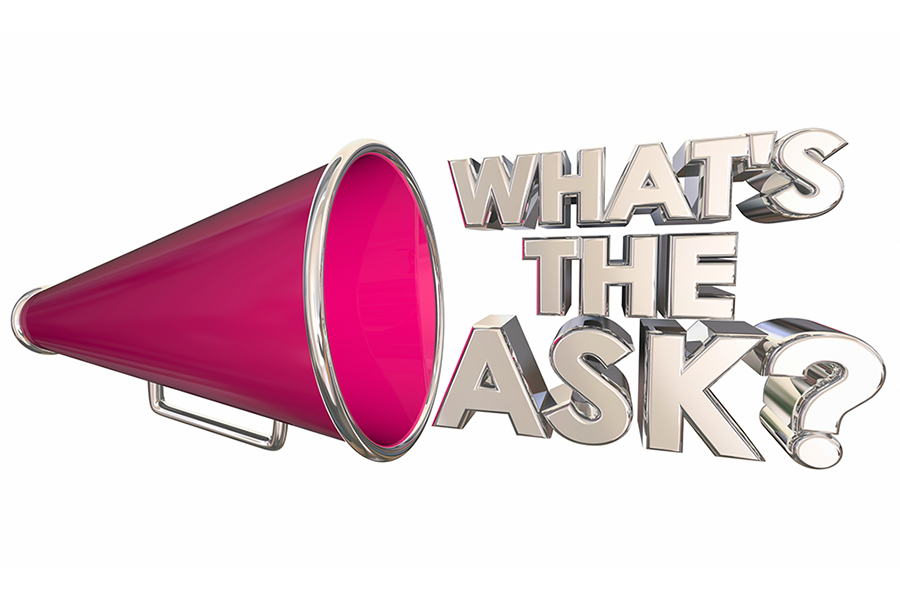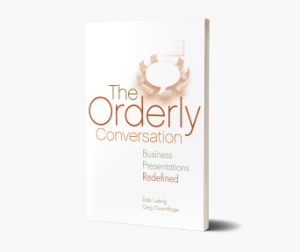
- Dale Ludwig Meetings, Presentations
Recently we delivered a workshop for a group of staff members at a Big Ten university. The group was made up of leaders from various parts of the university’s expansive library. They were a fascinating group with truly interesting jobs.
These individuals had been asked to meet with small groups of university donors in hopes they’d also support the library. While they were playing a development (fundraising) role during these meetings, the head of development, I’ll call him William, was the one who would ultimately make the “ask.” He was, in other words, the one who would sit down with each of the donors to discuss their donation in detail.
The Discomfort of Being Specific with Your Goal
When it came to framing their presentations, the librarians struggled with their goal statement. After all, they reasoned, they weren’t responsible for the ask. That was William’s responsibility. They saw their role as an informative one, a way to excite donors about what the library did. So, they wondered if it was even necessary to state a goal for their presentations.
This resistance to the idea of making a specific recommendation at the beginning of presentations is common. Even for some salespeople, whose primary responsibility is to persuade someone to buy something, stating that goal clearly upfront is a struggle. From what we’ve seen, there are two reasons for this.
- This first is that making the “ask” feels pushy and too aggressive. This was certainly the case with the librarians, especially because their presentations are part of a larger fundraising process.
- Second, many presenters assume that the data they’re presenting speaks for itself. Therefore, there’s no need to tell the audience what they want them to do. One of the librarians, for example, was working on a presentation about how library services go beyond large rooms lined with books for students. The library supports faculty, the university as a whole, and the community it is a part of. With all that information, it should be obvious what the audience should do next.
Easing the Discomfort to Reach Your Goal
My response to both of these concerns was pretty simple: your goal does not have to be aggressive; it just needs to be specific. The goal of every presentation is to take someone from Point A to Point B. A specific goal, then, lets listeners know what Point B is.
Here are some examples.
| Aggressive Goal | Specific Goal | ||
| For the librarians |
“Please donate $5,000 to support student-curated exhibits.”
|
vs. | “Before you leave, I invite you to sign up for a tour of this exhibit. I think you’ll be amazed.” |
| For a salesperson | “By the end of my presentation, you’ll be ready to place an order for this new product.” | vs. |
“Today, I’d like to introduce you to our new product and point out how its features meet your needs.”
|
|
For a manager speaking to their team
|
Accept this new process and use it immediately. | vs. | Today I want to show you the new process so you can begin exploring it. |
“…your goal does not have to be aggressive; it just needs to be specific.”
Why a Specific Goal is Necessary
To understand why a clearly stated goal is necessary, remember that every presentation succeeds on two levels. The first level of success has to do with business outcomes. When the presentation is over, will the audience do, think, or feel what you want them to? The second level is about the presentation process itself and how listeners feel about it.
- Is the presentation easy to listen to?
- Is there a clear understanding of what you’re there to accomplish?
- Is there a feeling of trust between the listener and the presenter?
By communicating a specific goal, like those listed above, listeners have an easier time understanding why they’re in the room and how the information presented in the body of the presentation relates to them. Always assume that audiences want to know what you want them to do. Otherwise, the presentation risks having no point.
So, no matter how uncomfortable it might be for you to state your goal, audiences will appreciate it.
Head here to learn more about how we can help transform your team’s business presentation skills and engage listeners in more purposeful and productive conversations.


